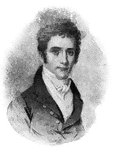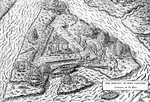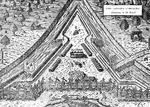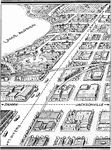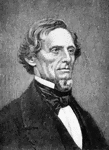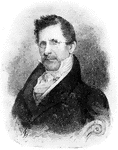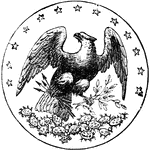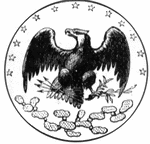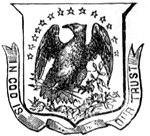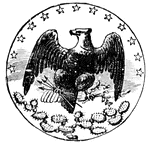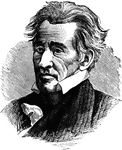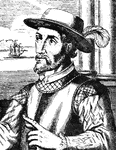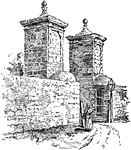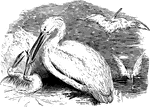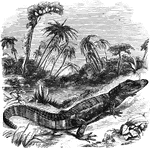
Alligator
The Mississippi alligator grows to a length of fourteen or fifteen feet, inhabiting lakes, rivers, and…
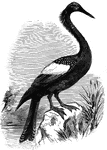
Anhinga
Also known as the snake-bird, the anhinga inhabits the freshwater areas of the South Atlantic States;…
Biscayne Bay
An illustration of Biscayne Bay, is a lagoon that is approximately 35 miles (56 km) long and up to 8…

William D. Bloxham
(1835-1911) Picture of Governor William D. Bloxham during 1879. Bloxham served as Florida's thirteenth…

American box-tortoise
Posessing a nearly perfectly hemispherical shell, the American box turtle ranges from Canada to Florida.…

Branch of Brittle Thatch Palm
Also known as Thrinax microcarpa. A small palm native to Florida and the Caribbean.
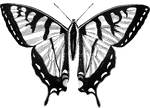
Troilus Butterfly
"The Troilus Butterfly, Papilio Troilus, is a superb insect, the wings denticulated, black,…

Branch of Corkwood
Also known as Leitneria floridana. A shrub native to the southeastern United States.
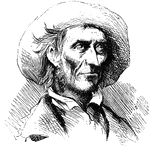
Florida Cracker
An illustration of a Florida Cracker. Florida Cracker refers to the original colonial era American pioneer…
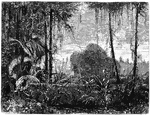
Everglades
The Everglades is a subtropical wetland located in the southern portion of the U.S. state of Florida,…
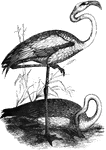
Flamingoes
The American flamingo stands about five feet tall, and is found throught tropical America, including…
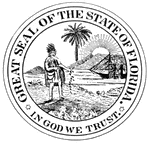
Florida Seal
The former Great Seal of Florida, featuring an indian, palm tree, the sun, and some uncharacteristic…

Florida Shore
Diagrammatic section of Florida along the line N.S. showing the relative position of the shore.

Branch of Florida Strangler Fig
Also known as Ficus aurea. A branch of a Florida Strangler Fig tree, native to the state of Florida.

Branch of Florida Yew
Also known as Taxus floridana. A rare species of yew found in northern Florida.
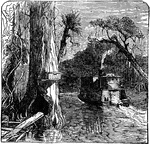
Silver Springs, Florida
Silver Springs is a clear basin within the St. Johns River in Florida. It is famed for its depth and…

Fort Jefferson
An illustration of Fort Jefferson which is located today in what is Dry Tortugas National Park. Dry…

Fort Jefferson, Garden Key
Fort Jefferson was built in 1826 in Garden Key, Florida and used in the American Civil War.

Fort Marion, St. Augustine
The Castillo de San Marcos, previously known as Fort Marion, is a Spanish built fort located in the…

Fort Taylor
The Fort Zachary Taylor State Historic Site, better known simply as Fort Taylor, (or Fort Zach to locals),…

Fort Taylor, Key West
Fort Taylor was built in 1845 in Key West, Florida and used in the American Civil War.

Forts Pickens and McRae
Fort Pickens is a pentagonal historic United States military fort on Santa Rosa Island in the Pensacola,…

Flowering Branch of Hibiscus Coccineus
Hibiscus coccineus flowers are bright scarlet. The flowers bloom in July and August. The shrubs grow…
Indian Key
An illustration of Indian Key located in the Florida Keys. Indian Key State Historic Site is an island…
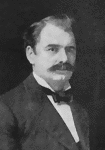
William Sherman Jennings
(1863-1920) In 1901, Governor William Sherman Jennings of Brooksvillie was Florida's eighteenth governor…
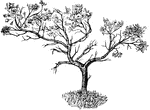
Juniper in Barren Soil Form
Genus Juniperus of the cypress family Cupressaceae. This juniper is found in barren soil form, in east…

Siren lacretina
"Two feet long, black above and dusky beneath. It is of an eel-like form, lives in the muddy water of…
Mangrove
Mangroves (generally) are trees and shrubs that grow in saline coastal habitats in the tropics and subtropics.…
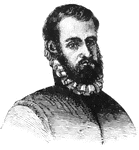
Don Pedro Menendez de Aviles
Don Pedro Menendez de Aviles sailed to Florida to conquer and colonize.
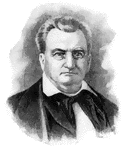
John Milton
(1807-1865) Portrait of Florida Governor John Milton. As a Democratic governor, Milton encouraged the…

Musk-tortoise
The musk tortoise draws its namesake from its strong musky odor. It is found from Maine to Florida.

New Fernandina
"Federal troops marching through Second Street, New Fernandina, Fla. Our sketch of New Fernandina in…
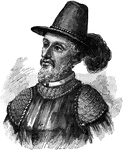
Juan Ponce de Leon
Juan Ponce de León (1474 – July 1521) was a Spanish conquistador. He accompanied Christopher Columbus…
